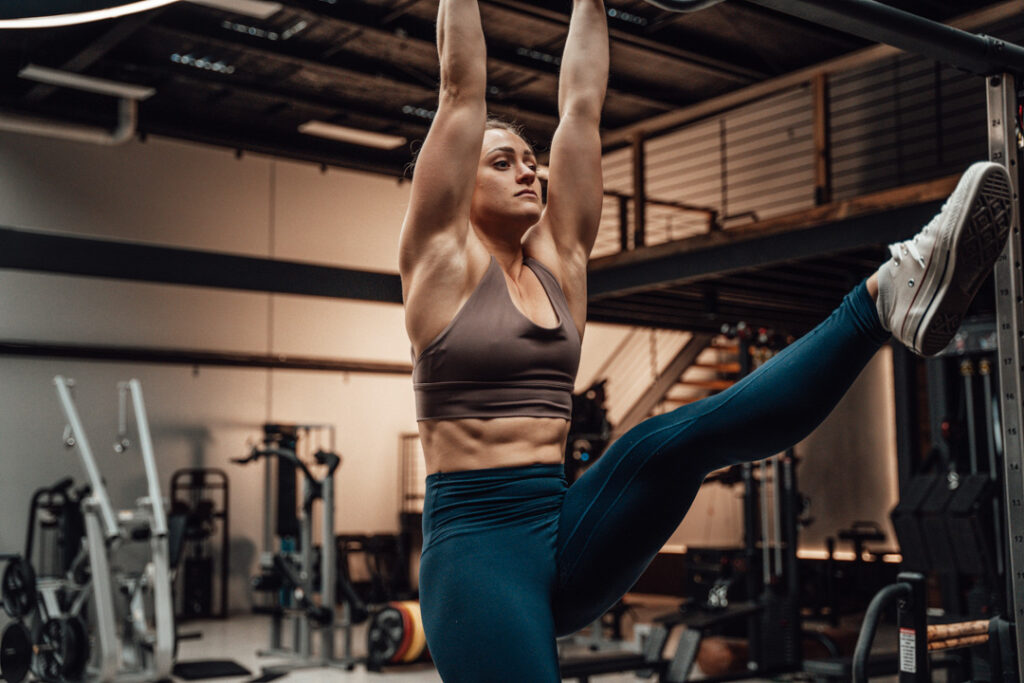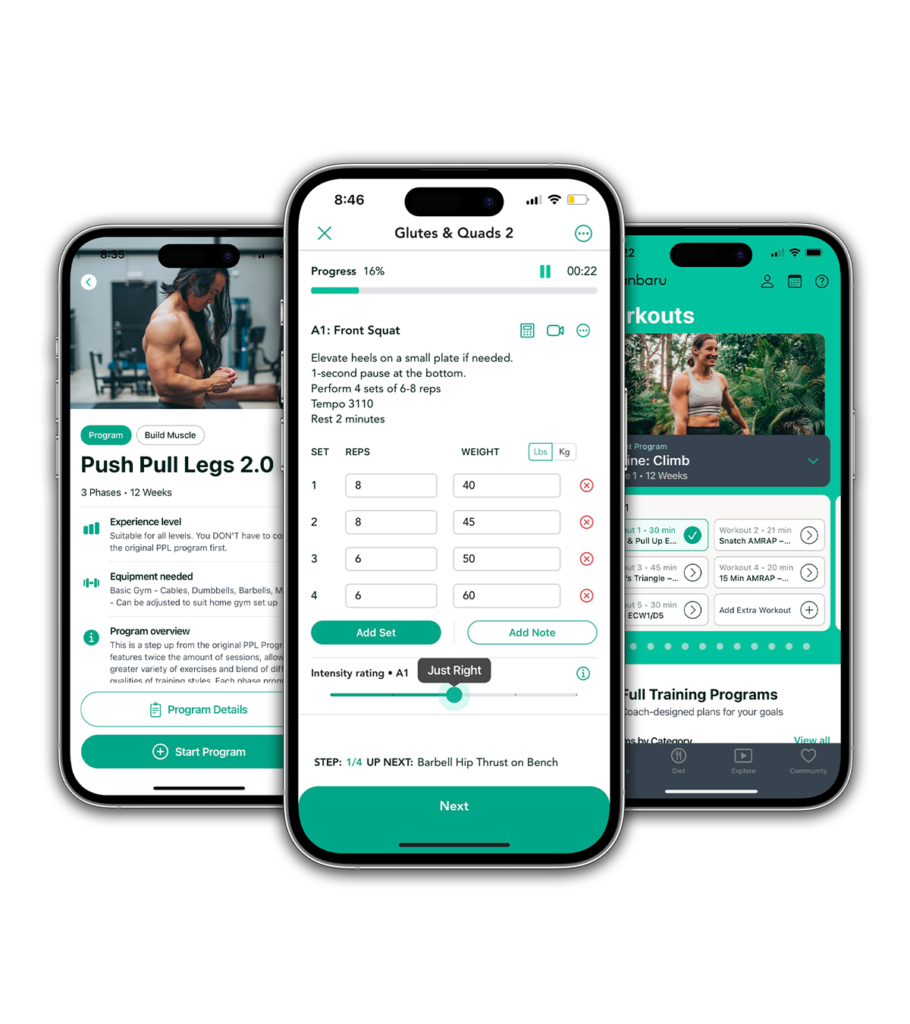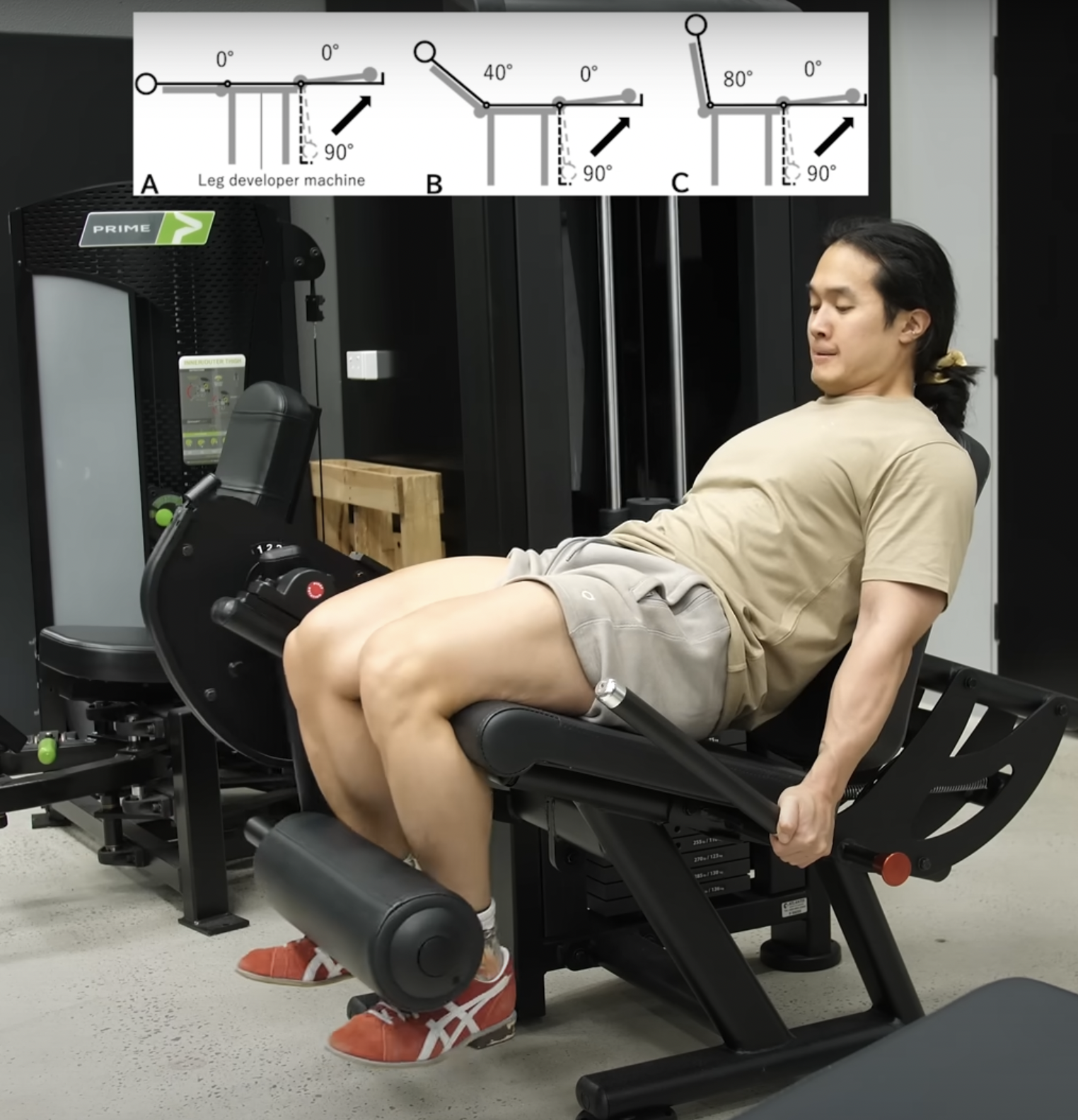Corey, 33, used Ganbaru Method to place in bodybuilding shows, achieve the splits, and transform his confidence with his health.

Let’s move past boring old planks! While they have their place, we can also spice them up and add elements to challenge your abs and involve other muscles to help you get full-body strong. These gymnastics ab exercises will help you improve your strength as well as your coordination.
Hollow body hold with Lumbar Band
What You’ll Need
A small, light band, and something to attach it to (like a heavy dumbbell or kettlebell, or an upright on the rig or squat rack.
Technique
Stretch the band out and lie down with your back on top of the band. It should be placed directly below your belly button or slightly lower. You should have to push your lower back down into the band to prevent it from snapping away from you.
Reach for the sky with your hands, pulling your bottom ribs down toward your hips. Then lift the feet off the floor into a tucked position without losing the pressure down into the band.
Extend the arms up and the legs out as far as you can WITHOUT losing any pressure down on the band. this tucked position is important to achieving a good hollow body position. Hold this position for as long as you can – it should feel burny on your abs!
Common Mistakes
The most common mistake is losing pressure into the band and letting it slide away as the set goes on. Another mistake is trying to reach too far, too soon – it’s okay if you need to be tucked for a while until you are strong enough to do the full hollow body in the correct position.
Planche pulse
What is it?
The planche pulse is a gymnastics drill that strengthens your abs, shoulders and wrists while improving your ability to maintain tension in a rigid plank position. It forces you to manage the force of the band throwing you out of position so that you have to maintain your body line. And it’s fun!
What You’ll Need
You’ll need 1-2 thick resistance bands, and a squat rack where you can set the j-hooks at mid-thigh height.
Technique
Climb into the band so that both feet are together. Initiate the first pulse by kicking off the band slightly, or driving the hips down. Now, make your body rigid from the shoulders down as you bounce up and down in the band. Increase the amount of bounce by pushing down into the floor, getting your shoulders further over your hands, and by slightly whipping your legs down into the band. You will have to be super tight as you stretch the band downward otherwise the rebound will break your body line.
Common Mistakes
Not staying tight! Lots of people break at the hip in this drill, or try to use the hips for momentum – this is a movement that the shoulders initiate and the abs prevent movement. Think of being in a plank, and only your shoulders change where they are.
Plank on Box Alternating Legs
What is it?
Like the planche pulse above, this drill forces you to maintain your position with your abs while other things are moving around.
What You’ll Need
A 20″ x 24″ x 30″ box that doesn’t totally collapse under force (wood is good, or a firm plyo box).
Technique
Maintaining a hollow body (slightly crunch your abs) in your plank position, lift one foot at a time. See how little you can shift from left to right while you do this.
Common Mistakes
Shifting too much from side to side so that the hips wobble. Your hips should stay square to the ground.
Letting the lower back sag – you should be slightly crunched down and tight when you do this movement.
Plank on Low Band with Alternating Arms
What is it?
Planking in a resistance band (which is wobbly and unstable), forcing you to create extra tension to resist movement as you shift from one hand to the other and back.
What You’ll Need
You’ll need 1-2 thick resistance bands, and a squat rack where you can set the j-hooks at mid-thigh height.
Technique
Maintaining a hollow body (slightly crunch your abs) in your plank position, lift one hand off the floor at a time. Your body will shift left to right, but try to keep your hips and chest pointed straight at the floor while you move.
Common Mistakes
Losing tension – make sure you stay in a hollow body all the way through this exercise.
Plank on Low Band with Alternating Legs
What is it?
Exactly like the above – but instead of your arms moving, it’s your legs this time!
Technique
Maintaining a hollow body (slightly crunch your abs) in your plank position, lift one hand off the floor at a time. Your body will shift left to right, but try to keep your hips and chest pointed straight at the floor while you move.
Common Mistakes
Losing tension – make sure you stay in a hollow body all the way through this exercise.
Single Leg Pike Lifts
What is it?
A core compression exercise – training your lower abs in a lot of spine and hip flexion.
Technique
With your legs flat on the floor in front of you, place your hands next to your knees. Keeping the hands flat down and legs straight, lift one leg off the floor. If that’s too hard, bring the hands further back closer to your hips.
Common Mistakes
Stay hunched over – don’t lean back as you lift!
Pike Lifts
What is it?
Exactly like the above – but this time you’re going to lift both legs! Keep them straight and try to stay curled over to get some lower ab and hip flexor muscle action in this movement.
Straddle drags
What is it?
A core compression exercise that helps you figure out how to push into the floor and close your hip angle. This brings your feet closer to your hands and engages the lower abs.
Technique
With your legs wide, place your hands out in front of you. Lean your shoulders and hips as far as you can over the hands. This should make your feet feel like they are lighter on the floor than before. Push into the ground to make them feel even lighter. Now, drag the feet closer to you until they are in line with your hands. Walk your hands out again, and repeat.
Garhammar raise with bar in rack
What is it?
I normally hate a Garhammar raise because all I feel is lats, but the barbell adds stability that I find much easier to manage than a typical Garhammar. The higher the incline, the harder this is.
Technique
Set a bar in a rack and a bench on an incline. Make sure your arms can be straight reaching up to the bar. From here, peel one vertebrae off the bench at a time until only your upper back and shoulders are left on the bench.
Hollow body hold
What is it?
A gymnastics classic for training abs with a small compression component.
Technique
Pressing your lower back into the floor and pulling your lower ribs and belt line toward each other in a small crunch, reach your hands and knees toward the sky. Then reach your hands as high over your head and your legs as close to straight as you can, without the lower back losing contact with the floor. If you can’t extend that far, extend as far as you can without losing that position on the ground.
Hollow body rocks
What is it?
A scaled up version of the hollow body hold. Attempt these once you’ve got a solid 30-60 second hollow body hold.
Technique
From your hollow body position, rock back and forth, making sure one vertebrae at a time rolls across the floor.
Hollow body lifts
What is it?
A scaled down version of the hollow body hold. Do these to find your way into the hollow body if the holds were too difficult.
Technique
From a lying down position, lift into the hollow body position, then return. Do as many lifts as you can, extending the duration at the top as you get more proficient at the hold position.

Ready to workout?
Follow proven programs written by expert coaches, delivered in an easy-to-use app built by lifters, for lifters.
Related Posts
10 tips for more leg strength and size
5 tips for better back gains
Squat stronger with this 1 simple tip
Building muscle is a science, and understanding the principles behind muscle hypertrophy is the key to making gains. In this blog post, we’ll break down the science of muscle growth, including training techniques, nutrition strategies, and recovery tips to help you maximize your muscle-building potential.




